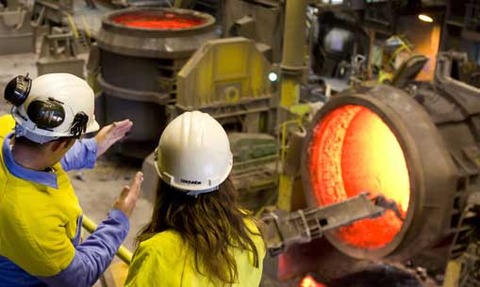Steel industry decarbonisation project secures £1.26 million
14 Feb 2020

The UK Research and Innovation-funded Centre for Research into Energy Demand Solutions (CREDS), has provided a grant of £1.26 million for a decarbonisation project that aims to eliminate the steel industry’s dependence on fossil fuels.
CREDS director Professor Nick Eyre said: “Decarbonising the UK energy system is a major national challenge for the coming decades, nowhere more so than in major industrial processes.”
According to figures from the World Steel Association, every tonne of steel that is manufactured creates 1.8 tonnes of carbon dioxide. With the UK legally committed to be a net-zero emitter of greenhouse gases by 2050, the industry needs to end its dependence on carbon in order to ensure its own survival.
Principal investigator on the project professor William Gale, who is an energy expert at Leeds University, which is collaborating with Sheffield University for the scheme, explained the challenge.
“The reality is the steel industry in the UK has to decarbonise, but this has to be done sensitively otherwise there is a risk the industry will relocate to where the rules on carbon are more lax. Our challenge is to bring about real change without eroding the wafer-thin margins on which the industry operates," he remarked.
“Steel is an important material so we can’t just stop manufacturing it. This project will bring together a range of experts: from scientists and engineers involved in researching alternative methods of production or ways to recover it from scrap – to policy and business experts analysing the policy initiatives and incentives needed for this change.”
Steel is an important material so we can’t just stop manufacturing it
Professor William Gale, Leeds University
The chemistry at the heart of the steel production process uses carbon. Coke, which comes from coal, is used as a reducing agent in the blast furnace. Carbon dioxide is produced as a waste product. The liquid hot metal which comes out of the blast furnace is saturated in carbon and the excess carbon is then removed in a basic oxygen furnace to produce crude steel.
According to the European Steel Association (EUROFER) about 50 per cent of the steel produced in Europe is derived from scrap metal melted in electric arc furnaces requiring huge amounts of energy. Recycled steel is only ‘clean’ if it is recovered in furnaces that use green electricity – a resource also sought for the growing number of electric vehicles.
Added Gale said: “We will delve into the costs and timescales and develop a very detailed, fully-costed ‘route map’ of technologies and policies which will enable industry to make this vital transformation without it being saddled with unrealistic costs.”

